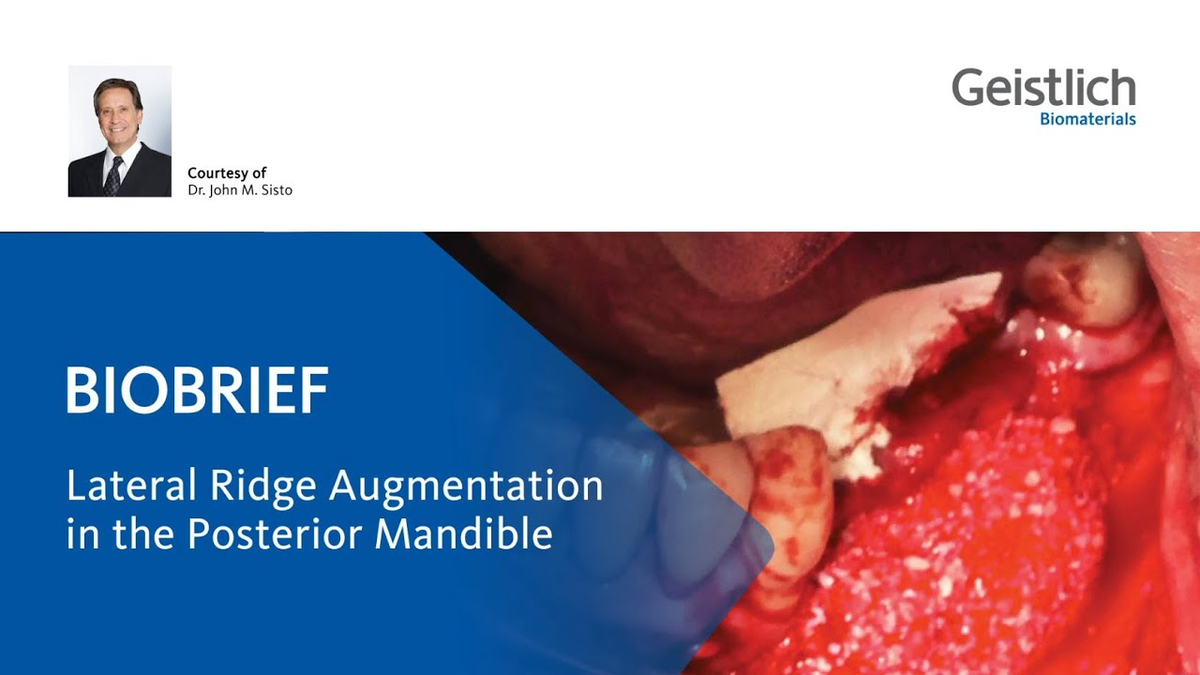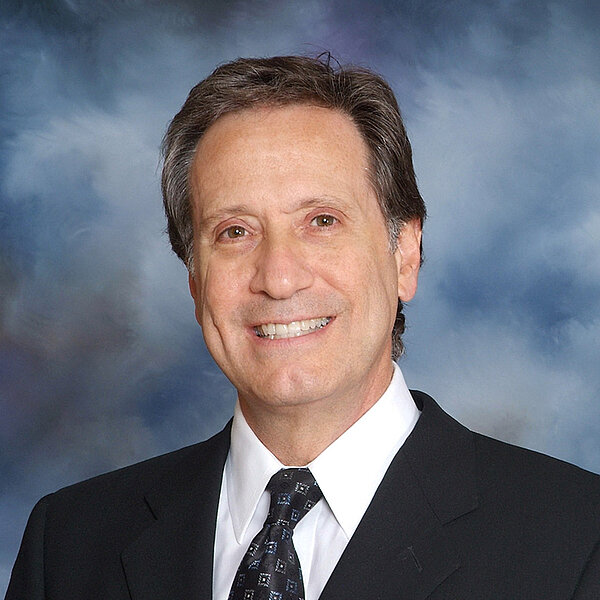
Ridge augmentation in the posterior mandible
BioBrief - Minor Bone Augmentation
The Situation
A seventy year old female in good health, presented with a fracture of tooth #19 which is the distal abutment for a four unit bridge tooth #19-22, with pontics in the #20 and #21 positions. With the loss of the bridge, the patient desired a fixed prosthetic replacement. A bridge from tooth #22 to an implant placed at the #18 position was not deemed mechanically sound. She opted for implant placement at positions #19, #20 and #21 following lateral ridge augmentation with autogenous bone and Geistlich Bio-Oss® contained with a Geistlich Bio-Gide® membrane.
The Approach
A subperiosteal flap with a mid-ridge incision was performed with anterior and posterior releasing incisions which were placed the distance of one tooth mesial and one tooth distal from the graft site. The posterior releasing incision allowed for exposure of the ramus for harvesting of the autologous bone. The grafted site was allowed to heal for a period of 8 months at which time the implants were placed. Abutment connection occurred 4 months following implant placement.
The Outcome
Following 8 months of healing, the augmented site showed sufficient bone width that was assessed with a CT scan. After examination, it was determined that the bone width was adequate for implant placement in the desired position to allow an esthetically pleasing and functional outcome for the patient.
Keys to Success
- Wide subperiosteal disection on the lingual and buccal with periosteal releasing incisions to prevent tension on incision closure to prevent wound dehiscience
- Appropriate pre and post-operative antibiotics to prevent infection
- Geistlich Bio-Oss® (small granules, 0.25-1 mm) and autologous bone in a 50:50 ratio for longterm graft maintenance
- Geistlich Bio-Gide® membrane (40 x 50 mm) to cover and contain graft with pins and/or screws for membrane fixation
Watch this BioBrief







